Revision Strategies – What’s One of Those?!
I picked up Cider with Rosie and began reading. I read for 20 minutes, sort of. Put Top of the Pops on. Read a few more pages. Fiddled with my English exercise book. Stared out of the window. Then convinced myself I’d revised, and went downstairs for tea. I was 15. This was 1986. I had no idea what revising meant, so I did what I thought. I read a bit and scribbled a bit. The biggest skill I was developing was self-talk. My ability to persuade myself that I’d done a lot when I hadn’t. I was a master at that. Sadly, little else. And certainly not exam revision strategies!
Let’s Help Our Kids to Do Better than We Did, with Revision Strategies
Roll-on <a few years!> and my son Jack is 15. He is revising and I can help him. Why? Because I have been in the world of corporate learning for over 17 years as a soft skills training provider whose USP is to make learning stick. So hopefully, I can help him. And I can help you. I don’t want any kid to develop their self-talk more than to achieve the very best of themselves. Exams, I hated them – I think we all did. A single point in time where we need to prove ourselves. Prove that we can remember stuff and regurgitate it onto paper. I can help guide you with 14 revision strategies. Simple revision tips that I have proven to work with Jack.
#1: Create a Revision Timetable
Sounds boring. I know. A plan. Plans don’t excite me either. Unfortunately, your child needs one. School provides so much structure. Get to school at this time, or you’ll get a detention. Arrive at your lessons on time. Go here. Go there. And then they are left to revise and struggle because there is no structure.
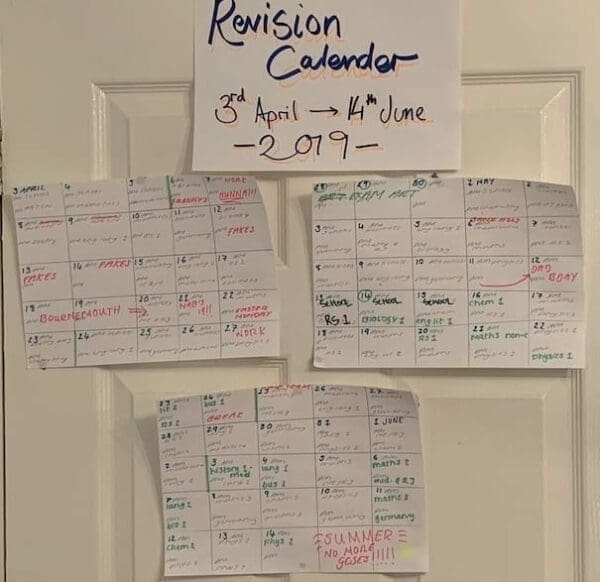
You don’t need to plan every minute, in fact, don’t. You do need to plan a week. The key principles are:
- How many hours a day will they revise? 7 seems to be the recommended amount.
- Factor in when they will start, when they will end, 45 minutes for lunch, and then they need breaks. For every 1.5 hours, they get 20 minutes.
- And what will they revise? 3 subjects per day feels about right.
- A day off in the week? If there is no school and they are revising all week.
- Are they still at school? Then only 2 hours in the evening.
Action: Help your child to create a simple plan for the week. A piece of A3 paper (2 pieces of A4 stuck together will do) and split it into 7 days.
#2: Flash Cards Are a Very Effective Revision Strategy
Flash cards, or revision cards, are very effective. Probably the least used and most effective of all the revision strategies. If you were to put these revision strategies in a Boston Matrix you’d find flashcards top right. They are essentially postcards with information written on them. The reason they work is that the child has to create them. This means taking pieces of related information from a book, digesting it and then writing it onto a postcard.
There are 3 learning inputs. We learn through what we see, what we hear and what we feel. By reading the information the child hits the seeing learning input. By writing the card the child hits the feeling learning input, as they write it. Then, when they are tested, they are speaking the answer, hitting the hearing learning input. Watch Jack demonstrating how it’s done, below:
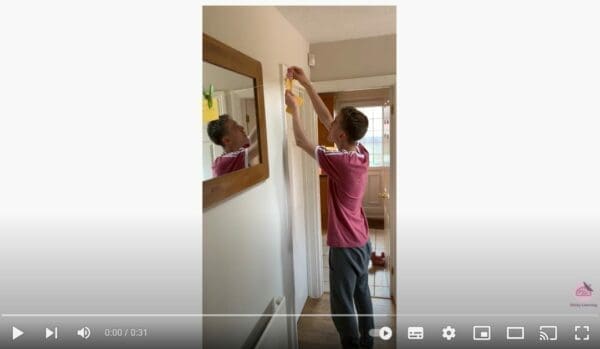
Action: This guy does an excellent job of explaining how to create effective flash cards. Watch the video below. Please don’t buy ready-made revision cards because most of the learning happens by creating your own. Using someone else’s flashcards is like sellotaping sandwiches to your stomach if you are hungry – Completely missing the objective. Instead, buy a pack of blank revision cards and a set of pens & highlighters, and get creating.
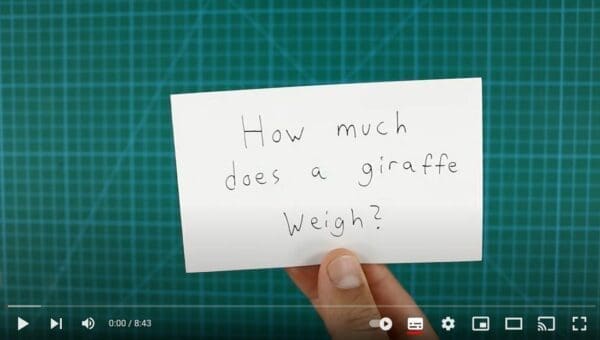
#3: Know the Exam Techniques
At Jack’s school, they talk a lot about exam techniques as part of revision strategies. I must say it took me a while to understand what they were saying. The only exam technique I remember from my school was, ‘Make sure you read the whole question first’, and ‘Know how many papers there are to do, at the start’. Ever since that one kid completed Paper 1 thoroughly, and didn’t see Paper 2 until 5 minutes before the end! Poor kid. The exam techniques have become a little more sophisticated since then and well worth understanding.
If it is a Maths exam know how many types of questions there are, and their spread. For example, in a passed Maths exam Jack and I saw that there were 2 mark questions, 3 mark questions, 4 mark questions, 5 mark questions and 6 mark questions. Their spread was as follows:
- 2 mark questions – 6
- 3 mark questions – 5
- 4 mark questions – 4
- 5 mark questions – 2
- 6 mark questions – 7
This means that a student can adopt an approach that best suits their capability. For example, the 2 mark questions probably need the lowest capability, and the 6 mark questions, the highest capability. If Maths is a weaker subject for your child the technique could be to tackle the 2, 3, and 4 mark questions first, and then if she/he has time, to tackle the 5 and 6 mark questions.
Jack says, ‘For English, teachers give out paragraph plans for certain essays. Remembering these and practising them revolutionised my revision and practice papers.
Action: Encourage your child to ask the teacher for an exam technique for their subject.
#4: Study Groups Can Work and Can be a Problem
I’ll leave this to Jack to explain best:
‘Revising with friends can seem like a great idea, but for me, they do not work at all. Study groups can be very effective but only if they work.’
Action: The action is to try one and be honest with yourself if it really worked, or not.
#5: Testing is a Very Effective Revision Strategy
In our corporate training, we use our unique training method Sticky Learning. One of the parts of this method is quizzes. At the end of a training day, the tutor runs a quiz. Whilst this is a piece of fun the science behind why is very compelling. Roddy Roediger, Psychology Professor at Washington University, says that if we are not tested we’ll remember only 27%.
Testing your child is a very effective exam revision strategy because it ‘forces’ your child to dig into their memory and recall what they have learnt. The science behind testing is undisputed and can significantly increase your child’s retention of information.
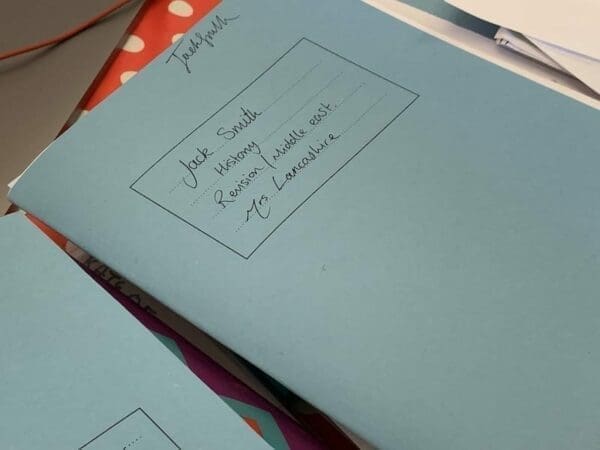
You can question your child from flashcards, a revision booklet, their exercise book, their mind map…Anything that has the information. The challenge for you is to get better at what questions you ask to avoid them rote learning and also to add some variety. Here are different types of questions you can use:
- <Blank> led the war against the Israelis in the <blank> year. Fill in the blanks.
- Does the heart pump blood to the left for the lungs or to the right?
- In which year was the Jenner society formed?
- True or false: Nuclear families are the only type of families existing in the 21st century.
- Here is a definition. Tell me what it is a definition of.
- Make an argument that the UK was wrong to bring in a smoking ban.
- Describe the theory of Pythagoras, how it can be used, and provide an example.
Action: Improve your questioning skill and test your child often.
#6: Be Careful of the Risk of Rote Learning
One of the biggest risks of revision is rote learning. Rote learning is a memorisation technique based on repetition. Whilst the GCSE exams are, to some extent a test of memory, they also require the student to pull-on different pieces of information and put them together. For example, ‘Explain what caused the Plague of London in 1665’ requires not a memory response of ‘Here is a 500-word answer, but a draw on different information that they then need to pull together into a good argument.
Rote learning is being able to sing the song for the alphabet. Remember, ‘A..B…C..D..E…’ with that tone being played in your head. However, if you were to ask the child what comes after Q they would struggle because they have learnt the alphabet as a solid block. Moving away from rote learning means that they have learnt the alphabet as a song, which letter comes after another, and what is the 15th letter. By doing this your child is much more able to draw upon the segments of what they have learnt to then be able to build it as they wish.
To avoid rote learning firstly parent and child need to be aware. Secondly, when you are testing, or they are testing themselves they need to mix it up. I.e. In our example, What comes after H? What is the 9th letter? Say the first 7 letters in reverse order.
Action: Understand rote learning and its limitations. Then revise to avoid learning the rote way.
#7: Testing with Past Papers Can Really Work
One of the advantages that our children have, is access to lots of resources. One of those resources is past papers. Online you can find past papers in the subject that your child needs to revise. These are an ideal revision strategy because they can ‘as near as dammit’ do the exam. The biggest challenge for them is to ‘sit the exam’ at home. They need to create an exam condition. No phones, no books, no papers, etc. Just them, the exam paper and a clock. If they do this properly they will achieve two things:
- They will know what they can achieve so far. For example, a Grade B. Or a score of 7, in new money). This really helps because they then have a bar. A bar to beat. A personal best. That is their ‘PB’. Just like Usain Bolt knew his personal best and just kept trying to beat it. They then need to beat theirs.
- Your child will be able to identify their strengths and weaknesses. I recommend highlighting each question as Red, Amber, or Green, to show that they didn’t have a clue – Red, they got some of it – Amber, and they nailed it – Green. Then, they make a list of the sub-topics that they need to revise more. I.e. A Maths paper might show that the algebra questions were mostly Red. Algebra is a subtopic to revise further.
Action: Ask your child to show you past papers that they have completed.
#8: Highlighting Text is Very Useful
Taking old revision papers, textbooks, exercise books and highlight what is important. This is a great way to revise. It works because the child is having to read the text and also identify what is important and not important to pass their exam.
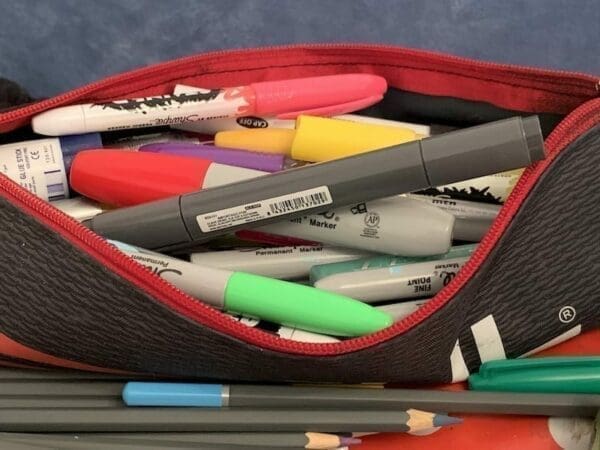
Action: Buy your child a set of highlighters. They could use a different colour for each subject. Jack says, ‘the importance of quality highlighters – the cheap, smart buy ones run out very quickly and this is incredibly frustrating. A pack of 8 Stabilo boss highlighters are only £10 from Amazon and the array of colours come in very handy. The thing is, highlighters are the only tool that can do their job effectively. The absence of a highlighter, once you’re used to having them, is like losing your left hand, you can work around it, but having it is 10x easier.
#9: Mind Maps – An Effective Revision Technique
An essential tool for life. A bit dramatic? Maybe. I discovered mind mapping in my early 20’s and never looked back. Mind maps are an essential tool in business and for kids at school. This is because they allow you to empty your thoughts onto a page. The brain struggles with doing 2 things at a time. Writing lists means that you have to write the things and order them at the same time. With mind maps, you can just ‘vomit on the desk’ as one friend once described mind mapping. The kids are taught to do ‘spidergrams’ at school. Same thing.
Tony Buzan founded mind mapping and there’ nothing like hearing it from the horses’ mouth in this 4.5-minute video:

Action: Understanding and create a mind map yourself. Then help your child to create a mind map and encourage them to use them. Remember that colour and pictures really help on mind maps.
#10: Set Simple Small Rewards
There is a famous test called the ‘Marshmallow test’. In essence young kids were offered a marshmallow, but if they waited a few minutes, not eating that one, they could have two. Basically, it was thought to predict success later in life because if you can suspend the instant gratification for the bigger picture, then you would achieve much more in later life. Like if you could take a lower paid job because it had a better career ladder.

We are wired for rewards. Bonuses at work. Chocolate cake after dinner. Medals for running. Plan in rewards. Much better than the student does 1.5 hours of work, then has a 20-minute break to do whatever they want, than a straight 3-hour stint. If your child can ‘wire’ their brain that if they concentrate for x, they’ll receive y, they are much more likely to achieve it. The rewards need only be small and simple. Nonetheless, they can be an effective yet simple revision strategy. For example, a hot chocolate with marshmallows, or 20-minutes of their tv programme.
Have small rewards throughout the day, and maybe a reward for the week. A trip to the cinema.
Action: Agree on what rewards your child will have daily, and weekly.
#11: Grow a Tree – A Revision Strategy for Generation Z!
We all know that our kids spend too long on their phones! They might not agree. In our generation…(Cue Unc from Only Fools and Horses talking about the war) we didn’t have this problem. During revision, it is even more essential that your child does not get continually disrupted by snap chat, Instagram, and every other platform that they use. If they do, they will be achieving shallow work only. In this article, I talk about the difference between ‘Deep Work’ and ‘Shallow Work’, and it is well worth understanding the difference so that you can support them even better.
My son Jack knows of the shallow work problem because his Dad keeps reminding him! To Jack’s credit, he found his own workaround, which did not involve us, as parents, having to take his phone away. He grows trees! Of course, it was a phone-based revision strategy, but a solution nevertheless. He downloaded a free app called, ‘Forest – Stay Focused’. In essence, if you stay on the same screen, i.e. do not flip to Instagram, your tree will grow. And you can create an entire forest.
This app is a great solution to the problem of staying focused. The gamification works well. You can go to the app by clicking on the image below:

Action: Download the App.
#12: Move Around. Don’t Get Stuck!
At work, I sometimes get stuck in a rut. We all do. The kids can be the same. We have to go into auto mode to some point. Spending each day and every part of each day at the top of our game, is not possible, though we’d like to think it is. We get up, we have breakfast, we go to work, we sit at our desk, we work, we come home. Shaking it up now and again works.
One example is to take the revision cards, go outside, stand up and test them. Moving away from the same environment is good. Standing up is good. Moving outside is good. These small changes interrupt the usual way of things and get your child to approach learning in a different way.
Action: Encourage your child to revise in their room, at the table, outside, whilst walking, in the garden, at a park – Lots of different places with different stimuli.
#13: Coach your Child
If you work you’ll have heard of the importance of coaching. Google’s project oxygen found that coaching was the skills manager needed most and lacked most too. Asking the right questions is essential. Doing it for them will not help. You have to resist the need to solve and embrace the need to coach.
Action: Read our Ultimate Guide to Coaching Skills.
#14: Discipline is the Key
Probably the hardest revision strategy of them all. The freedom children want away from the rigid structure of school can be a problem. For the first time in a decade, they are left to their own devices. Like the marshmallow test, this is where they start to lay the ground rules of whether they can create and follow their own structure, or not.
Action: Like any good people management book will tell you, catch your child ‘with their head down’. Catch them following their timetable. Catch them choosing to carry on. Praise them, praise them, and do it again.
A Summary of the Revision Strategies
- #1: Create a Revision Timetable
- #2: Flash Cards Are a Very Effective Revision Strategy
- #3: Know the Exam Techniques
- #4: Study Groups Can Work and Can be a Problem
- #5: Testing is a Very Effective Revision Strategy
- #6: Be Careful of the Risk of Rote Learning
- #7: Testing with Past Papers Can Really Work
- #8: Highlighting Text is Very Useful
- #9: Mind Maps – An Effective Revision Technique
- #10: Set Simple Small Rewards
- #11: Grow a Tree – A Revision Strategy for Generation Z!
- #12: Move Around. Don’t Get Stuck!
- #13: Coach your Child
- #14: Discipline is the Key
Jack’s Final Word

‘I saw a lot of kids willing to revise. They followed all the steps of revision prescribed by school assemblies and yet got nowhere because the left brain techniques pushed by the school didn’t work for more than an hour of these right-brained kids’ time. Trying out as many revision techniques as possible and as early as possible, will make later revision much more effective.’
Final Thoughts
Hopefully, these 14 revision ideas will help you and your child on the path to GCSE success. It is important to note, however, that this is not a silver bullet. There is not a single best way to revise. It is important to recognise that each child is different and will find different ways to revise. Some of these revision strategies will work. Some will not. However, the best revision techniques will likely involve a combination of the above revision tips. Plus, a lot of patience! Remember, this is the first big academic test that your child will face. It’s a stressful time for them – and for you. We wish you and your child the best of luck!
Lastly…A Letter from a Principal in Singapore to Their Parents
Not a strategy for revision, but a piece that a Principal in Singapore sent to the parents before their child’s exams. Worth reading:

And the London Underground sometimes has an answer too:





